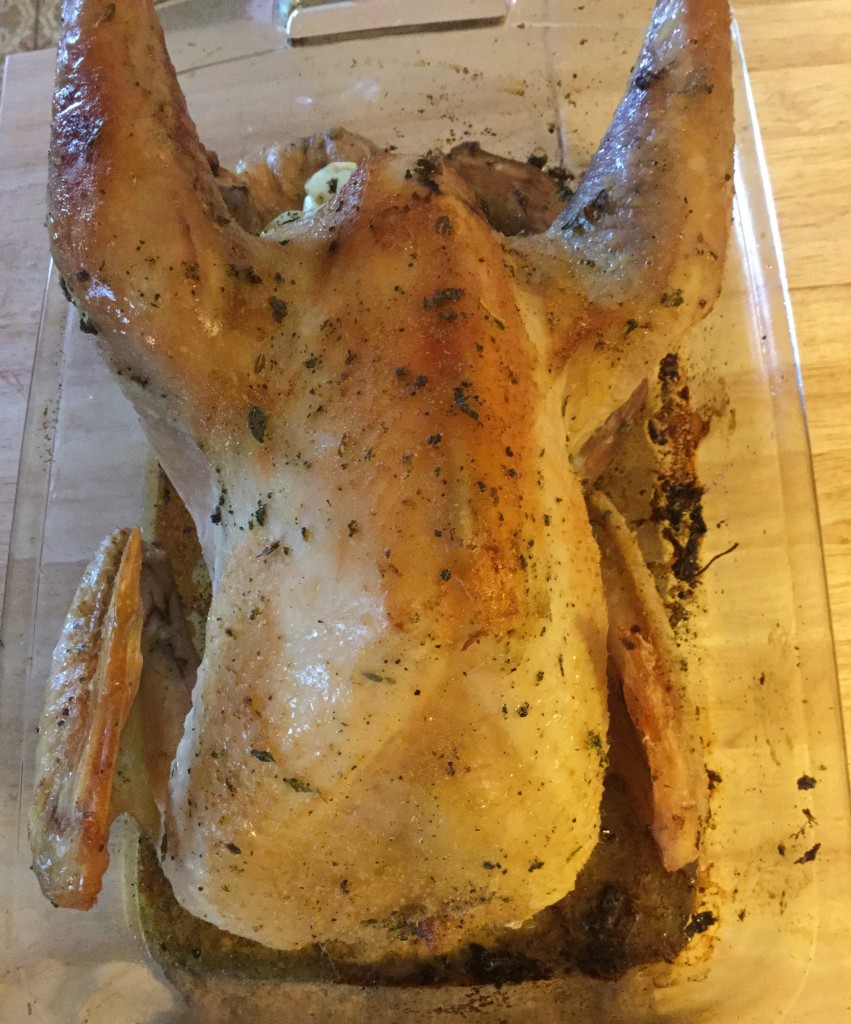Now that you’ve purchased your free range, non-GMO Heritage Thanksgiving Turkey, you’re probably wondering how to cook it! You may have noticed that your heritage bird looks very different than the average grocery store turkey. You are right to think that there is a different technique needed in cooking your heritage bird, but never fear! We have some recipe resources for you and your family to try this holiday season.
Heritage birds are smaller than an average grocery store turkey and they tend to cook more quickly. They have more dark meat, which is great for roasting the whole bird because it is less likely to dry out.
Heritage turkeys also taste different than your average Butterball turkey. They aren’t bland and actually taste like turkey. That’s because, well, they are turkeys. Heritage birds are closer to their wild ancestors and spend their free ranging days running around the land, building muscle for your Thanksgiving enjoyment. The flavor of the meat tends to pair well with earthy, aromatic spices like sage, rosemary, and thyme. This means you can get creative with recipes this holiday season!
Here are a few recipes that your family might enjoy this Thanksgiving:
- Roast Heritage Turkey by Chef Leonard Spampinato
- Chef Leonard roasts the turkey at 475 degrees for 30 minutes and then lowers the temperature to 250 degrees for 15-20 minutes per pound.
- Roasted Heritage Turkey by Sandra Kay Miller
- Sandra rubs butter between the meat and the skin and roasts the turkey at 425-450 degrees until it is done. There is no basting involved and the bird cooks in a giblet broth.
- Simple Heritage Roast Turkey by The New York Times
- This recipe calls for roasting the bird at 425 degrees for 30 minutes then reducing the temperature to 325 degrees until the bird is done. Butter is rubbed under the skin of the breast and the bird is cooked in giblet broth.
Here are a few of our tips for cooking your Heritage Turkey:
- Make sure your bird is fully thawed before you cook it.
- Take it out of the refrigerator and let it come up to room temperature for 30 minutes to an hour before you begin cooking it.
- Don’t overcook your bird!
- These birds have not been injected with whatever gross flavor concoction the conventional grocery store birds have been, so be sure to season appropriately (salt, pepper, garlic, whatever floats your gravy boat).
- The USDA recommends cooking your bird until the internal temperature (the meat in the inner thigh) reaches 165 degrees. However, many chefs recommend cooking your Heritage Turkey until it reaches 140-150 degrees.
- When you take your bird out of the oven, let it rest for at least 15-20 minutes before you carve it. This allows for all of the moisture and juices to seep back into the meat instead of being released as steam.
- Don’t cook the stuffing inside the bird. Because heritage birds cook quicker, the stuffing might make the bird cook unevenly. You can still add aromatics like part of an onion, apple, or carrot to the cavity to add moisture and flavor.
- If you are cooking it at a higher temperature, you might want to skip basting the bird. This is because constantly opening the oven door lowers the temperature and might make the bird cook unevenly.
- Heritage Turkeys do not need to be brined (they have their own delicious flavor). Some chefs say that brining enhances the flavor and others say that it is unnecessary and simply extra work.
- Don’t forget to save your bones! Simmer them in a crock pot with water for hours to make a stock or broth. These birds were raised naturally on pasture and their bones, tendons, and joints will make a delicious and nutritious broth!
For more information and tips about cooking your Heritage Turkey, check out these articles from Rodale’s Organic Life about How to Cook the Tastiest Bird Ever This Thanksgiving and The Magic of Fire: Traditional Foodways by William Rubel.
We wish you a Happy Thanksgiving, from our Family Homestead to your Family Table! If you are interested in sharing your Heritage Turkey recipes or pictures from this year’s Thanksgiving, send us an email at ourochreway@gmail.com so we can add it to our website!
Also, it’s not too early too early or too late to reserve your free range, non-GMO Heritage Thanksgiving Turkey for Thanksgiving 2016. Check out our Heritage Turkeys page for more information!

